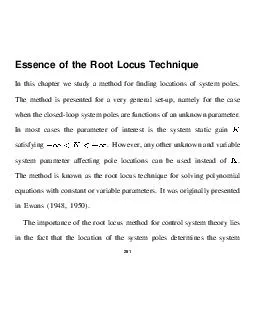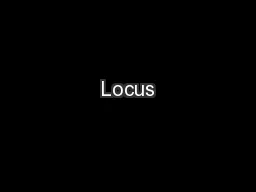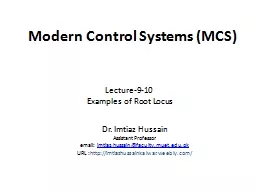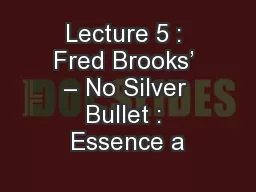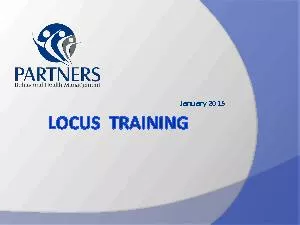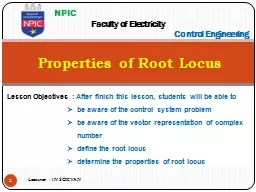PDF-Essence of the Root Locus echnique In this chapter we study method for nding locations
Author : karlyn-bohler | Published Date : 2014-12-20
The method is presented for very general setup namely for the case when the closedloop system poles are functions of an unknown parameter In most cases the parameter
Presentation Embed Code
Download Presentation
Download Presentation The PPT/PDF document "Essence of the Root Locus echnique In th..." is the property of its rightful owner. Permission is granted to download and print the materials on this website for personal, non-commercial use only, and to display it on your personal computer provided you do not modify the materials and that you retain all copyright notices contained in the materials. By downloading content from our website, you accept the terms of this agreement.
Essence of the Root Locus echnique In this chapter we study method for nding locations: Transcript
Download Rules Of Document
"Essence of the Root Locus echnique In this chapter we study method for nding locations"The content belongs to its owner. You may download and print it for personal use, without modification, and keep all copyright notices. By downloading, you agree to these terms.
Related Documents

